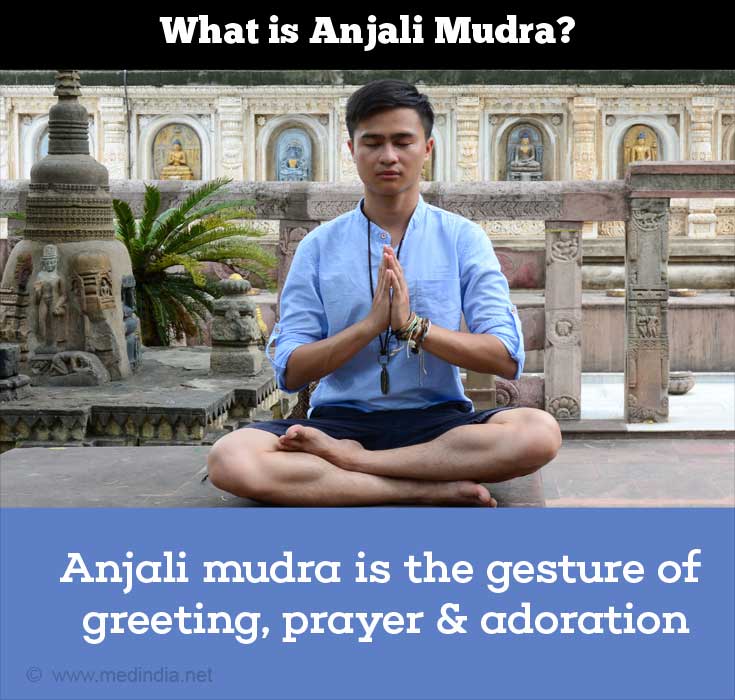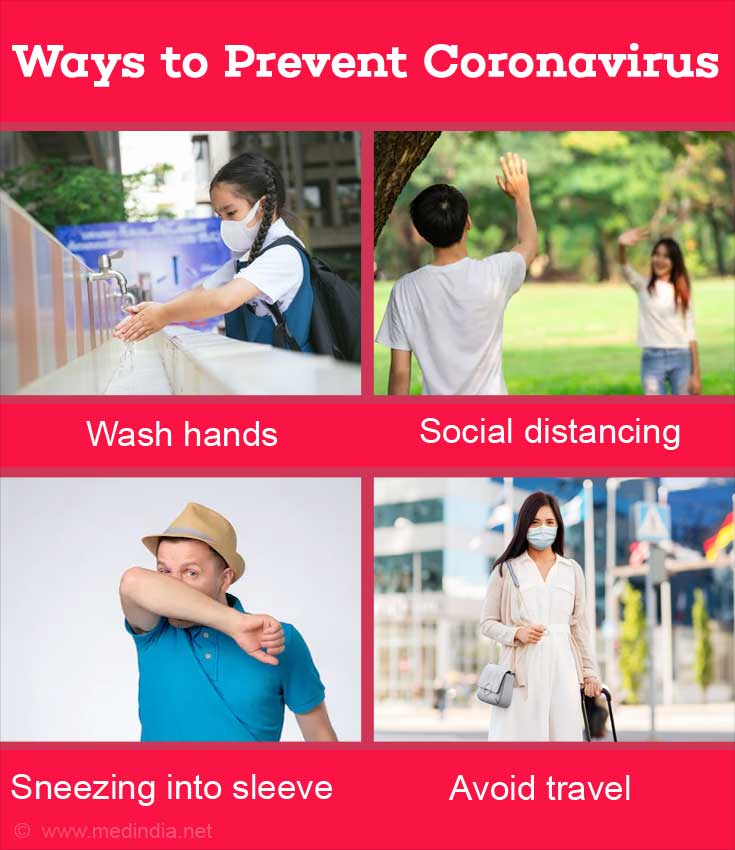- Namaste and Bowing as Signs of Respect - (http://sanskrit.org/namaste-and-bowing-as-signs-of-respect/)
- Coronavirus: Time to Rethink the Handshake - (https://www.shrm.org/hr-today/news/hr-news/pages/coronavirus-time-to-rethink-the-handshake.aspx)
- The Real Meaning of Namaste - (https://yogaretreats.org/blog/the-real-meaning-of-namaste/)
- COVID-19 - (https://www.osha.gov/SLTC/covid-19/controlprevention.html)
COVID-19
The COVID-19 pandemic due to the coronavirus is changing how we greet each other. The traditional Indian and far east way of greeting with folded hand and saying Namaste is slowly becoming the accepted norm the world over and replacing the conventional handshake.
Unlike handshake, in Namaste there is no contact with the other person and so avoids any transfer of bugs, and it makes this a safe practice of greeting one another, amid all this panic and anxiety the virus has created.(1✔ ✔Trusted Source
Coronavirus: Time to Rethink the Handshake
Go to source)
The Namaste greeting is used in yoga extensively and is meant to connect both the spheres of the brain through the nerve endings of our hands. The word Namaste is derived from Sanskrit word. Nama means bow or me, and te means you, hence namaste literally means "bow me you" or "I bow to the divine in you."

Conventionally after folding hands together, one is expected to bow forward towards the other person and close one’s eyes as a gesture of respect. The folded palms and fingers are kept close to the heart and the hands point to the ‘third eye’ that is supposed to be located between our eyebrows. If it is done with deep feelings in the heart and with our minds surrendered, we can invite a deep union of our spirits.(2✔ ✔Trusted Source
Namaste and Bowing as Signs of Respect
Go to source)
Namaste in yoga is an Añjali Mudrā and is practiced in many Asian countries. It is used as a sign of respect and a greeting not only in India but also in Nepal, Bhutan, Burma, Sri Lanka, Thailand, Laos, Cambodia, and Indonesia. It is also used among all yoga practitioners, Buddhists, Taoists, and Shintoists. The gesture is incorporated into many yoga asanas, and is used for worship among Hindus, Sikhs, Jains, and Buddhists.

This gesture, when used as a mudra, can alleviate mental stress and anxiety and is therefore used to assist the yoga and other practitioners to focus and get into a meditative state of mind. The physical execution of the pose itself helps to promote flexibility in the hands, wrists, fingers, and arms.
Namaste in other Indian Languages
The folded hand greeting, though called Namaste or Namaskār in Hindi and Devanagri, is different in other languages. And here is the list -
- Hindi & Nepali - Namaste
- Devanagari- Namaste and Namaskār
- Odia - Namaste / Namaskār
- Tamil - Vanakkam
- Malayalam - Namastē / Namaskāram
- Kannada (in Karnataka) -
- Namaskāra (singular)
- Namaskaragalu (plural)
- Kannada (in Northern Karnataka) - Sharanu
- Telugu -
- Dandamu / Namaskaram (singular)
- Dandaalu / Namaskaralu (plural)
- Pranamamu (Formal Telugu)
- Bengali -
- Nōmōshkar (used formally)
- Prōnäm (informally)
- Assamese - Nômôskar
- Marathi - Namaskār
Namaste in South East Asian Languages
- Nepal - Namaste / Namaskar
- Bhutan - Kuzoozangpo La
- Burma - Mingalaba
- Sri Lanka - Ayubowan
- Thailand - Sawasdee
- Laos - Sabaidee
- Cambodia - Sampeah / Choum Reap Sur
- Indonesia - Selamat siang
Namaste Gesture as Yoga Asana
While Anjali Mudra may be performed by itself from any seated or standing posture, the gesture is also incorporated into physical yoga practice as part of many full-body asanas, including:
- Anjaneyasana (Crescent Moon Pose) – Lunge with arms overhead
- Eka Pada Rajakapotasana (Pigeon Pose/King Pigeon Pose) – Seated back-bending
- Hanumanasana (Monkey Pose) - Front splits
- Malasana (Garland Pose) - Squat
- Matsyasana (Fish Pose) – Reclining back-bending
- Prasarita Padottanasana - Wide-legged forward bend
- Tadasana / Samasthiti (Mountain pose) – A variant of the pose used during sun salutation sequences
- Utkatasana (Chair pose, literally "fierce pose") - Low squatting with arms overhead
- Urdhva Hastasana (Upward salute / Extended mountain pose) – Standing and raising arms overhead
- Virabhadrasana I (Warrior I) – High lunge pose with the right knee bent and arms overhead
- Vrikshasana (Tree pose) - Balancing pose which replicates the graceful, steady stance of a tree.(3✔ ✔Trusted Source
The Real Meaning of Namaste
Go to source)

What are the Universal Precautions to be Followed to Contain the Spread of Coronavirus (COVID-19)
Self-quarantine and social distancing are the first line of defense to contain the spread of the virus. These are few precautions that we can all observe to contain the virus -
- Frequent hand washing using soap or hand sanitizer and use them frequently both at home and when you are outside and touch any object
- Keeping a distance of one to two meters when your cough
- Cough or sneeze into your arm sleeve by turning your face to a side
- Self-quarantine and stay at home if you feel unwell and even have mild symptoms such as headache and slight runny nose, until you recover
- Avoid travel, conferences and crowded places if it is not necessary(4✔ ✔Trusted Source
COVID-19
Go to source)

Covid-19 can be contained if we all follow simple instructions, and it all starts with the way we greet each other. So, Namaste is in and handshakes are out.







